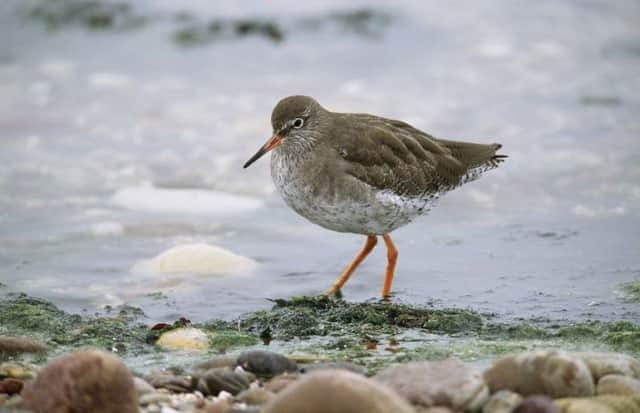Warming climate hits Scotland's winter visiting birds


Lapwings, redshanks and other wading birds that spend their winters in Scotland could be disappearing as a result of climate change, a new report suggests.
The latest official figures, published by Scottish Natural Heritage (SNH), show eight out of 14 wader species that spend winter here have been suffering ongoing declines since 1996.
Advertisement
Hide AdAdvertisement
Hide AdThese are the turnstone, ringed plover, redshank, purple sandpiper, dunlin, knot, golden plover and lapwing.
Populations in 2016 were are at their lowest levels since records began 40 years ago – 21 per cent lower than in 1976.
Experts say a range of factors are likely behind the declines, but climate change and a scarcity of food supplies are the major drivers.
Scotland is on the migration route known as the East Atlantic Flyway, with a number of bird species stopping off on their journey further south or to take advantage of milder winter conditions.
Simon Foster, trends and indicator analyst for SNH, said: “Many wildfowl and wader species breed in the Arctic and fly here to winter at one of 50 Scottish sites of international importance.
“While climate change and food availability are likely causes for the decline, there are some species where other factors may be at play.
“More research is needed to better understand these, and develop ways to help improve numbers of waders, including purple sandpipers and turnstone. Changes in the Arctic need to be better understood, especially for long-distance migratory waders, as well as what is happening on their wintering areas.
“We are working together with international researchers and volunteers to help our wintering waders.”
Advertisement
Hide AdAdvertisement
Hide AdThere is also some good news, however. Three wintering wader species – the black-tailed godwit, sanderling and grey plover – have increased, while numbers of wintering bar-tailed godwit, oystercatcher and curlew are currently similar to those seen in the late 1970s
The report, Abundance of Wintering Waterbirds, also shows numbers of geese and ducks have risen – dramatically in the case of some species.
Overall, goose numbers have increased nearly threefold, while numbers of 16 species of ducks and swans have risen by 14 per cent.
Record numbers of barnacle geese have been reported in Scotland in recent years, causing problems for farmers and crofters in some areas.
“Geese, particularly barnacle geese, have shown the greatest increases, with legal protection and changes to agriculture helping to boost numbers,” Mr Foster said.
“However, barnacle geese numbers are now reaching levels that can cause challenges for some crop-growers, and we are working with farmers to help address understandable concerns on how to manage this conflict.”
SNH is working on a range of projects aimed at helping Scotland’s wintering waders – including Working for Waders, which will help support breeding colonies through a variety of measures such as improving habitats.
The Abundance of Wintering Waterbirds is one of several biodiversity indicators designed to monitor changes in Scotland’s nature and landscapes. The reports highlight trends, helping SNH to develop protection strategies.